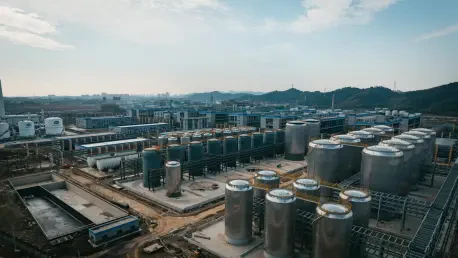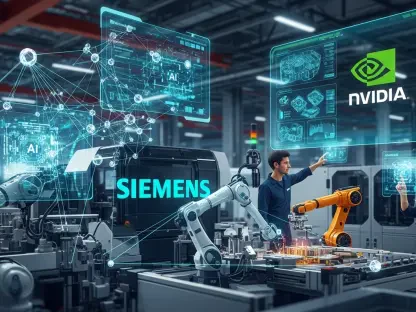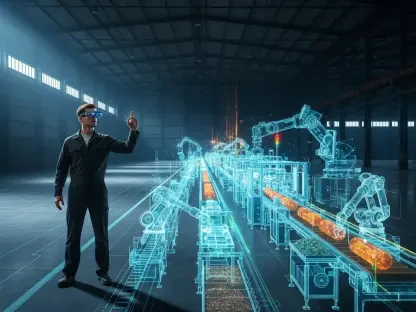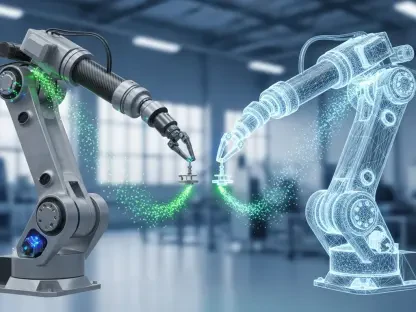Setting the Stage for a Sustainable Industrial Shift
In a world grappling with escalating climate challenges, the manufacturing sector stands at a critical crossroads, contributing over 35% of global greenhouse gas emissions, with a staggering 70% of this footprint stemming from Scope 3 emissions—those indirect impacts buried deep within sprawling supply chains. This market analysis delves into the pressing need for manufacturers to pivot toward sustainability, examining the forces driving this transformation, from regulatory pressures to economic incentives. It aims to uncover how the industry can balance environmental responsibility with profitability in an increasingly volatile global landscape.
The importance of this analysis lies in its ability to map out the current state of industrial emissions and forecast emerging trends that could redefine competitive dynamics. With projections warning of a catastrophic temperature rise of 4.1–4.8°C by 2100 if unchecked, the stakes for manufacturers are monumental. This exploration seeks to provide actionable insights into market patterns, technological innovations, and strategic imperatives that can guide the sector toward a greener, more resilient future.
Diving Deep into Market Trends and Sustainability Drivers
The Dominance of Scope 3 Emissions in Industrial Impact
A defining trend in today’s manufacturing market is the overwhelming role of Scope 3 emissions, which account for 70% of the sector’s environmental impact. Unlike direct emissions from production facilities or energy consumption, these indirect emissions arise from upstream sourcing, logistics, and downstream product use, creating a complex web that spans global supply chains. Many companies struggle to even measure these impacts, with data indicating that nearly half of surveyed firms lag in reduction efforts, hindered by inadequate tracking tools and fragmented supplier networks.
This challenge is particularly pronounced in industries like electronics and chemicals, where supplier diversity and product lifecycle emissions amplify the difficulty of decarbonization. Yet, the market is beginning to recognize that tackling Scope 3 emissions offers more than environmental benefits—it can shield firms from looming carbon taxes and enhance brand value among eco-conscious consumers. The push to address these emissions is not just a compliance issue; it is rapidly becoming a differentiator in a crowded marketplace.
Regulatory and Economic Pressures Shaping the Landscape
Another pivotal market force is the tightening regulatory environment, especially in regions like the European Union, where stricter emissions reporting and carbon pricing mechanisms are gaining traction. Governments worldwide are aligning with the Paris Agreement’s goal to limit warming to 1.5–2°C, placing manufacturers under intense scrutiny to curb their environmental footprint. Non-compliance risks hefty financial penalties, while adherence can unlock incentives and improve access to green financing.
Economically, the volatility of resource markets and geopolitical disruptions are nudging companies toward localized, sustainable sourcing models. The cost of inaction is steep—firms that fail to adapt may face supply chain interruptions or lose ground to competitors who prioritize eco-friendly practices. This trend signals a broader market shift where sustainability is no longer a peripheral concern but a core component of financial strategy, influencing investor confidence and customer loyalty.
Technological Innovations as Market Game-Changers
Digital transformation is emerging as a powerful catalyst in the manufacturing sustainability market, with tools like artificial intelligence (AI) and predictive analytics reshaping how emissions are managed. Advanced systems, such as digital twins, allow firms to simulate production processes and optimize for lower carbon outputs, while automated carbon assessment platforms enable detailed tracking across thousands of suppliers. These technologies are not just enhancing efficiency; they are redefining market expectations for transparency and accountability.
The adoption of such innovations, however, varies across sectors. Heavy industries like cement and steel are leveraging low-carbon energy solutions to address direct emissions, whereas consumer goods manufacturers focus on supply chain redesigns to tackle indirect impacts. Despite the promise of these tools, scalability remains a hurdle, as many solutions are still in early adoption phases. Nevertheless, the market trajectory suggests that digital enablers will play an indispensable role in meeting sustainability targets over the coming years.
Projections for a Sustainable Manufacturing Future
Anticipated Growth in Circular Economy Models
Looking ahead, the manufacturing market is poised for a significant shift toward circular economy models, where material reuse and waste minimization become standard practice. Projections indicate that industries like automotive and water management could see material savings of up to 50% by integrating circular principles, alongside cost reductions as high as 70%. This trend is expected to gain momentum from 2025 to 2030, driven by consumer demand for sustainable products and regulatory incentives for waste reduction.
The transition to circularity, while promising, will require substantial upfront investment and a rethinking of traditional production frameworks. Smaller firms, in particular, may face barriers in accessing the necessary capital or expertise. Still, market analysts anticipate that early adopters will secure a competitive edge, positioning themselves as leaders in a landscape increasingly shaped by environmental stewardship.
Evolving Consumer and Investor Expectations
Another critical projection for the manufacturing sector is the growing influence of eco-conscious consumers and investors. Market data suggests that sustainability is becoming a key purchasing criterion, with buyers favoring brands that demonstrate clear environmental commitments. Similarly, institutional investors are prioritizing companies with robust decarbonization plans, viewing sustainability as a marker of long-term resilience and profitability.
This shift is likely to intensify over the next decade, pushing manufacturers to integrate green practices across their value chains. Firms that fail to align with these expectations risk losing market share and access to capital. Conversely, those that proactively adopt sustainable strategies could tap into new customer segments and funding opportunities, reinforcing the economic case for environmental action.
Sector-Specific Trajectories and Regional Variations
Market forecasts also highlight significant variations across sectors and regions in the sustainability journey. Heavy industries such as mining and steel are expected to focus on curbing direct emissions through energy transitions, while sectors like electronics will grapple with intricate Scope 3 challenges tied to global supplier ecosystems. Regionally, European markets are likely to lead in regulatory stringency, while emerging economies may prioritize cost-driven approaches over compliance in the near term.
These disparities underscore the need for tailored strategies rather than uniform solutions. Market analysis suggests that between 2025 and 2027, cross-sector collaboration and knowledge sharing will become vital for scaling best practices. As digital tools mature, they are expected to bridge some of these gaps, enabling more consistent progress across diverse industrial landscapes.
Reflecting on Insights and Strategic Pathways Forward
Looking back on this market analysis, it is evident that the manufacturing sector stands at a pivotal moment where sustainability transitions from an optional initiative to a fundamental business imperative. The dominance of Scope 3 emissions, coupled with intensifying regulatory and economic pressures, underscores the urgency of action. Technological advancements offer a beacon of hope, providing tools to navigate complex challenges, while projections point to a future shaped by circular economies and evolving stakeholder expectations.
The implications of these findings are profound, urging manufacturers to adopt a multi-pronged approach as they move forward. Prioritizing quick wins, such as energy efficiency upgrades and packaging redesigns, allows for immediate impact while laying the groundwork for broader supply chain transformations. Investing in digital solutions to enhance emissions tracking and foster supplier collaboration emerges as a critical next step. Moreover, aligning sustainability goals with core business objectives ensures that environmental efforts translate into tangible market advantages, securing both resilience and growth in an ever-changing industrial arena.









